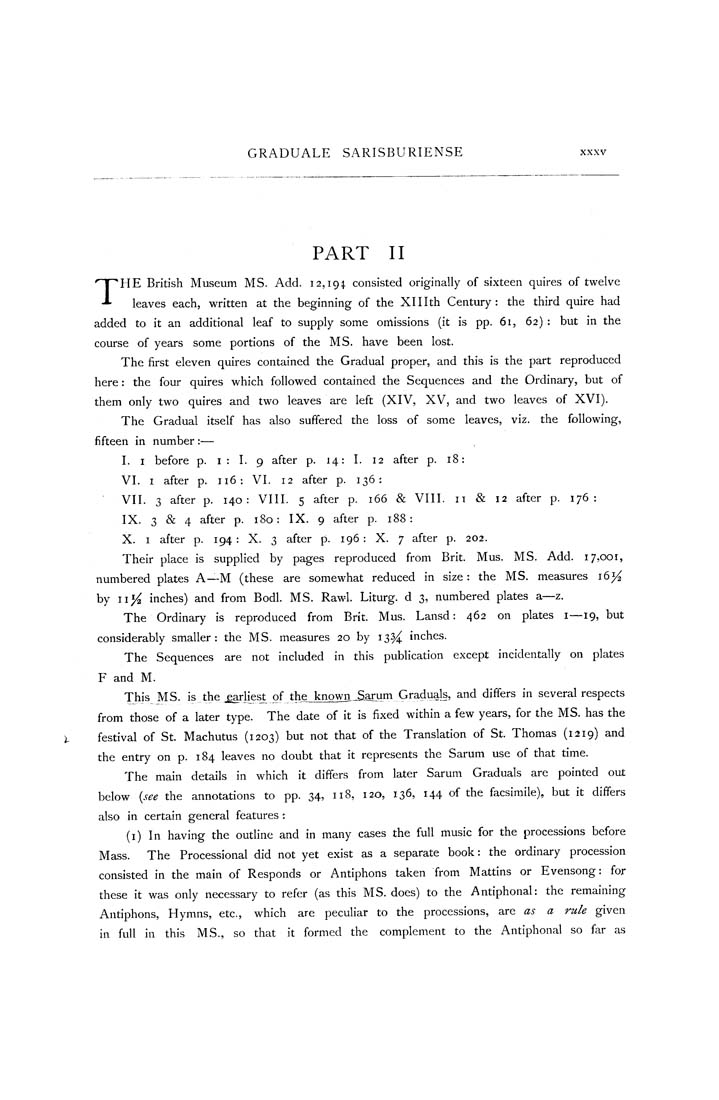GRADUALE SARISBURIENSE
XXXV
PART II
THE British Museum MS. Add. 12,194 consisted originally of sixteen quires of twelve
leaves each, written at the beginning of the Xlllth Century: the third quire had
added to it an additional leaf to supply some omissions (it is pp. 61, 62) : but in the
course of years some portions of the MS. have been lost.
The first eleven quires contained the Gradual proper, and this is the part reproduced
here: the four quires which followed contained the Sequences and the Ordinary, but of
them only two quires and two leaves are left (XIV, XV, and two leaves of XVI).
The Gradual itself has also suffered the loss of some leaves, viz. the following,
fifteen in number :—
I. 1 before p. 1 : I. 9 after p. 14: I. 12 after p. 18:
VI. 1 after p. 116: VI. 12 after p. 136:
VII. 3 after p. 140: VIII. 5 after p. 166 & VIII. n & 12 after p. 176:
IX. 3 & 4 after p. 180: IX. 9 after p. 188:
X. 1 after p. 194 : X. 3 after p. 196 : X. 7 after p. 202.
Their place is supplied by pages reproduced from Brit. Mus. MS. Add. 17,001,
numbered plates A—M (these are somewhat reduced in size : the MS. measures 16^
by n# inches) and from Bodl. MS. Rawl. Liturg. d 3, numbered plates a—z.
The Ordinary is reproduced from Brit. Mus. Lansd: 462 on plates 1—19, but
considerably smaller: the MS. measures 20 by ip/i incnes-
The Sequences are not included in this publication except incidentally on plates
F and M.
This MS. is the earliest of the_known^Sarum Graduals, and differs in several respects
from those of a later type. The date of it is fixed within a few years, for the MS. has the
festival of St. Machutus (1203) but not that of the Translation of St. Thomas (1219) and
the entry on p. 184 leaves no doubt that it represents the Sarum use of that time.
The main details in which it differs from later Sarum Graduals are pointed out
below (see the annotations to pp. 34, 118, 120, 136, 144 of the facsimile), but it differs
also in certain general features :
(1) In having the outline and in many cases the full music for the processions before
Mass. The Processional did not yet exist as a separate book: the ordinary procession
consisted in the main of Responds or Antiphons taken from Mattins or Evensong: for
these it was only necessary to refer (as this MS. does) to the Antiphonal: the remaining
Antiphons, Hymns, etc., which are peculiar to the processions, are as a rule given
in full in this MS., so that it formed the complement to the Antiphonal so far as
|








